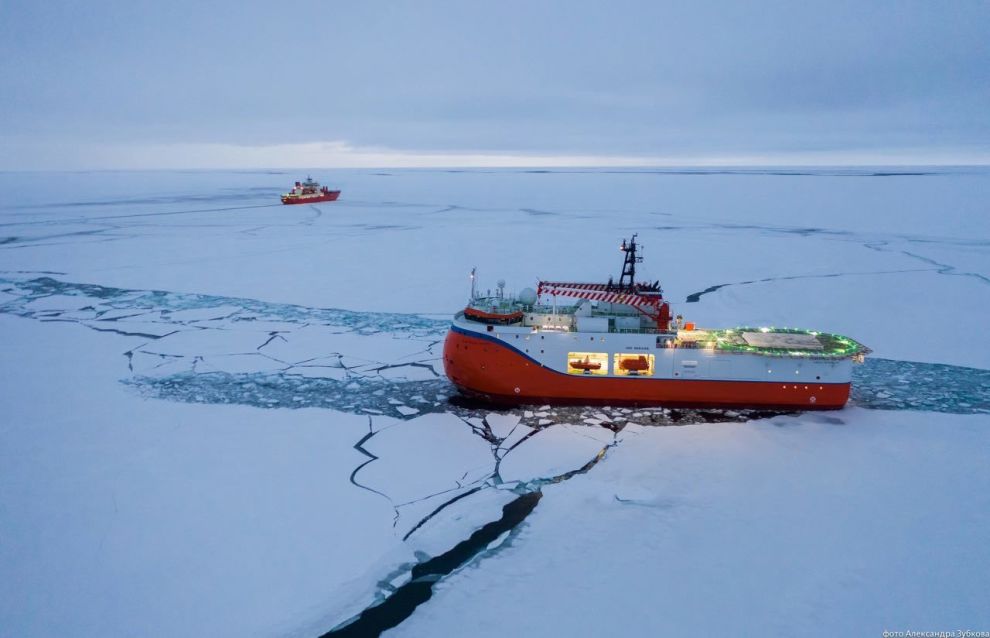North Pole expedition changes ice floes for the first time
During its first long-duration Arctic expedition, the North Pole self-propelled ice-resistant platform successfully changed ice floes for the first time and continued drifting with Arctic Ocean currents.
This ice floe change has not been attempted before in the Arctic. The North Pole 41 expedition is now entering the final stage of its mission, which is scheduled to end in late 2023, Alexander Makarov, director of the Arctic and Antarctic Research Institute, told journalists at a briefing.
“Our forecast indicates that the final stage of the North Pole 41 expedition will end this year. In the past 11 months or so, the station has covered about 3,000 kilometers, drifting freely from the Novosibirsk Islands to the northwest for over 1,200 kilometers, but it has been actively heading to the east in the past 30 days. The expedition platform is currently located above the Franz Josef Land Archipelago at 83.5 degrees north latitude. According to our estimates, the station will reach ice-free waters in the next few months when the scientific expedition ship North Pole will set sail for Murmansk,” Makarov noted.
Now is the warmest part of the year in the Arctic latitudes, he explained. The large ice floe that had been holding the North Pole station (which froze to it quickly) since October 2022 began to melt rapidly. We decided to continue the expedition by attaching the platform to another ice floe. A reconnaissance plane located the new ice floe, and the platform was attached to it. The platform froze to it quickly.
Scientists are now setting up a new ice camp on the ice floe which measures 1,200 by 1,800 meters. Once completed, the camp will help in the study of global processes in the Arctic. The self-propelled ice-resistant platform reached the ice floe on its own, then docked with and froze to it sideways.
The scientific research ship Akademik Tryoshnikov successfully rotated North Pole crews and delivered essential equipment and other freight for continuing the expedition. According to Makarov, 80 percent of the expedition’s researchers have been working in the Arctic for a continuous period of these last 11 months.
